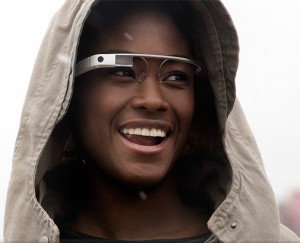
Google is offering its Google Glass for sale to the public for the first time today, in a limited-time promotion.
 Depending on how many people are willing to plop down $1,500 for the privilege, we could soon be seeing more of the high-tech spectacles on the streets — including the video-recording capability that has stirred up unenlightened paranoia or justifiable privacy concerns, depending on your perspective.
Depending on how many people are willing to plop down $1,500 for the privilege, we could soon be seeing more of the high-tech spectacles on the streets — including the video-recording capability that has stirred up unenlightened paranoia or justifiable privacy concerns, depending on your perspective.
Don’t worry, if you fall in the latter camp, Bill Gates has got you covered.
A newly surfaced patent filing, listing the Microsoft co-founder as an inventor, proposes to equip computer and device displays with technology for detecting and responding to any cameras in the vicinity by editing or blurring the content on the screen, or alerting the user to the presence of the camera. It doesn’t refer specifically to Google Glass, but generally addresses the increase in video cameras in our society.
Here’s how it works, according to the patent application.
Intruder analysis module scans the input for viewers, and classifies them as either intruders or safe viewers. Intruder analysis module also scans the input for cameras or camera-equipped devices (e.g., SLR cameras, camera-equipped cellular phones, point-and-shoot cameras, building-mounted camera systems, etc.). Intruder analysis module may classify an object as a viewer or camera using any number of detection algorithms. For example, intruder analysis module may apply motion detection algorithms on the sensor information, and may classify any moving object as a viewer. As another example, intruder analysis module may apply shape detection algorithms that scans the sensor information for lens (e.g., circular) shapes. As another example, intruder analysis module may apply shape detection algorithms that scans the sensor information to determine whether a detected camera has a lens cap emplaced; in this case it may not be considered as an intruder. As another example, intruder analysis module may apply shape detection algorithms that scans the sensor information to determine the orientation of a detected camera.
… The processing circuit (via the intruder analysis module) analyzes the information to determine the presence of intruding camera. The processing circuit (via the edit generation module) edits or changes content on electronic media display device in response to detecting intruding camera. For example, the processing circuit may blur the contents of the display or cause an alert to appear, thereby notifying user of the intrusion. In this manner, sensitive content can be protected from being captured by unauthorized cameras. It should be understood that the application is not limited to detecting cameras attached to buildings, and that other scenarios are envisioned. For example, electronic media display device 1300 may detect another cellular phone equipped with a camera. Similar embodiments are also useful in public locations or while a user is taking public transportation, where intruding cameras are likely to be present.
It’s the second patent filing in a series, and it appears to be the result of one of the high-level invention brainstorming sessions conducted by Intellectual Ventures’ Nathan Myhrvold, the former Microsoft chief technology officer. Gates has been a frequent participant in those sessions.
No word on when or even whether they plan to bring this surveillance-thwarting technology to market.



